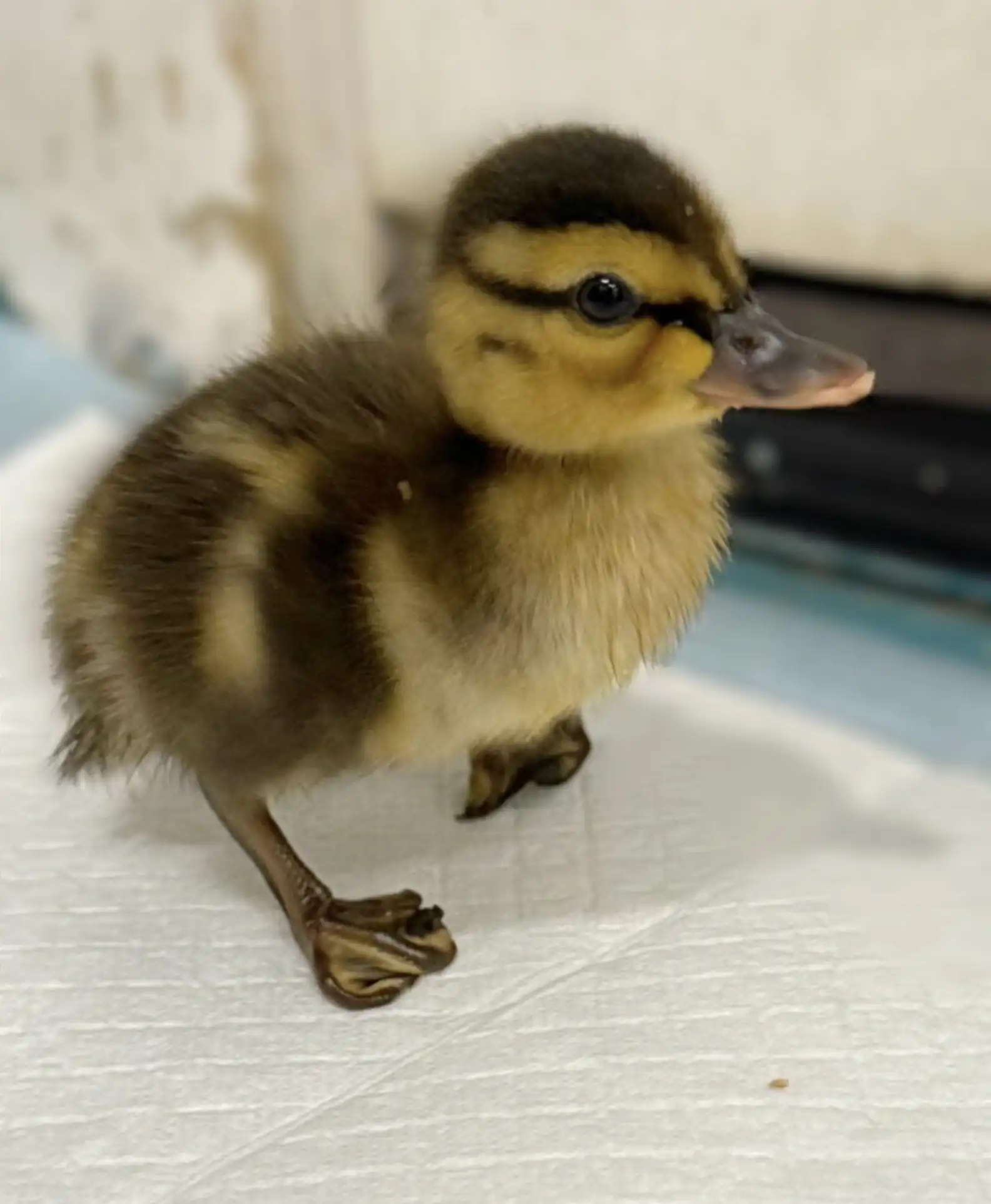Now they call him Happy Feet.
Happy Feet: Orphaned Duckling Gets a Second Chance — and Tiny Shoes
In early June, wildlife rehabilitator Jane Newhouse was settling a group of orphaned ducklings into a warm brooder when one little duckling stood out.
“He was struggling to walk,” Newhouse told The Dodo. “His little toes were curled in, and he was kind of walking on his knuckles. It looked really uncomfortable.”
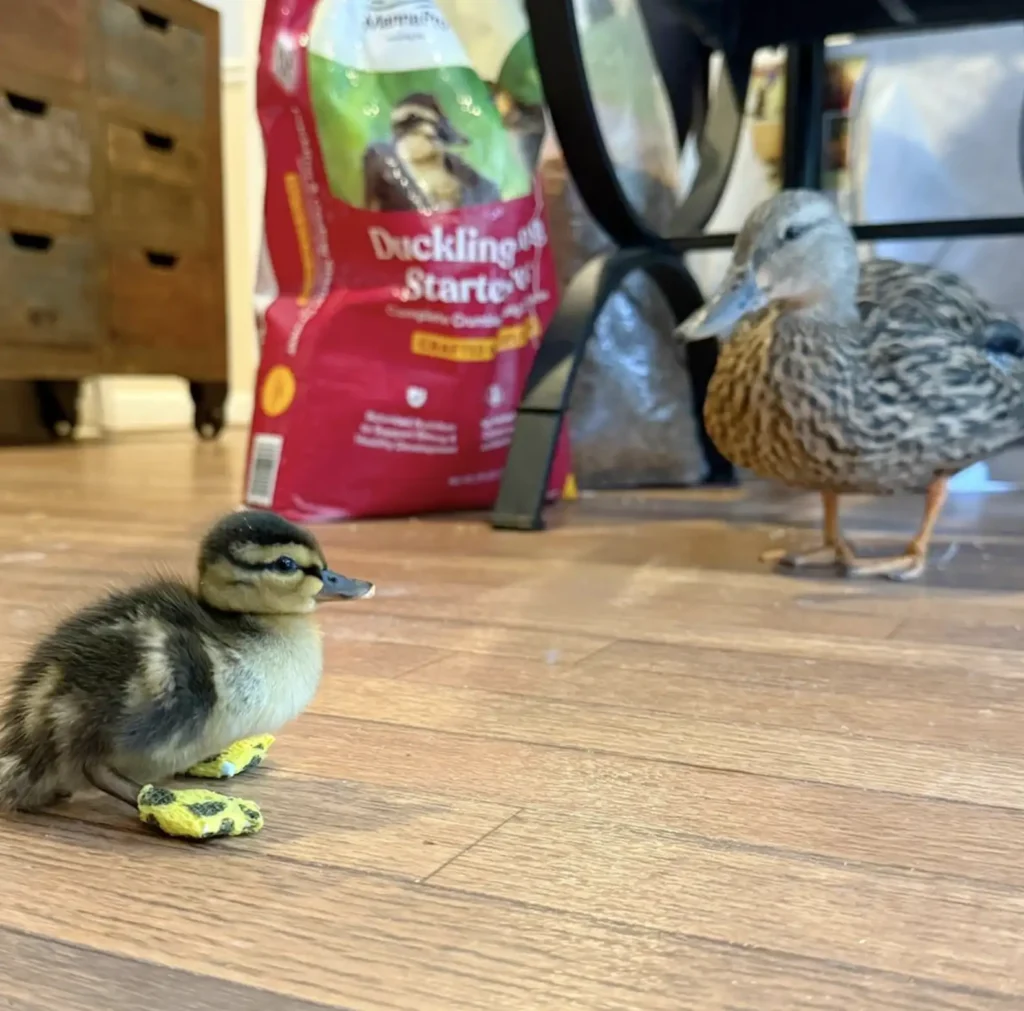
The duckling had just lost his mother in a heartbreaking — and sadly common — roadside accident. A driver, witnesses say, intentionally ran over the mother duck as she tried to lead her babies across the road. Another motorist, horrified by what he saw, stopped and quickly gathered the ducklings, rushing them to Newhouse Wildlife Rescue in Massachusetts.
While the others were physically unscathed, one duckling’s feet hadn’t formed correctly, likely due to a vitamin deficiency while in the egg. Without help, his curled toes would’ve left him disabled for life.
So, Newhouse got creative.
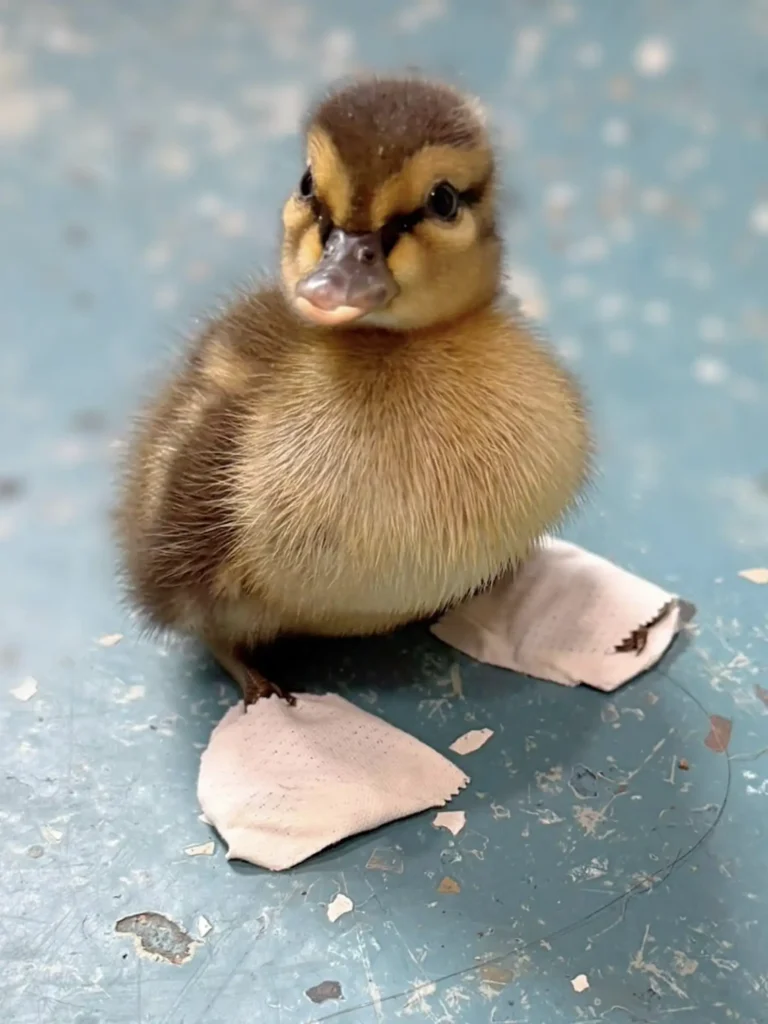
Using the lid of a food container and some medical tape, she crafted the tiniest pair of orthopedic shoes. At first unsure, the duckling quickly adjusted — and soon was waddling faster, stronger, and clearly more confidently.
The team nicknamed him Happy Feet — and the name stuck.
“We changed the shoes every day to keep them clean and dry,” Newhouse explained. “After three days, we took him to the vet and took them off, and his feet were perfectly flat. He was walking normally.”
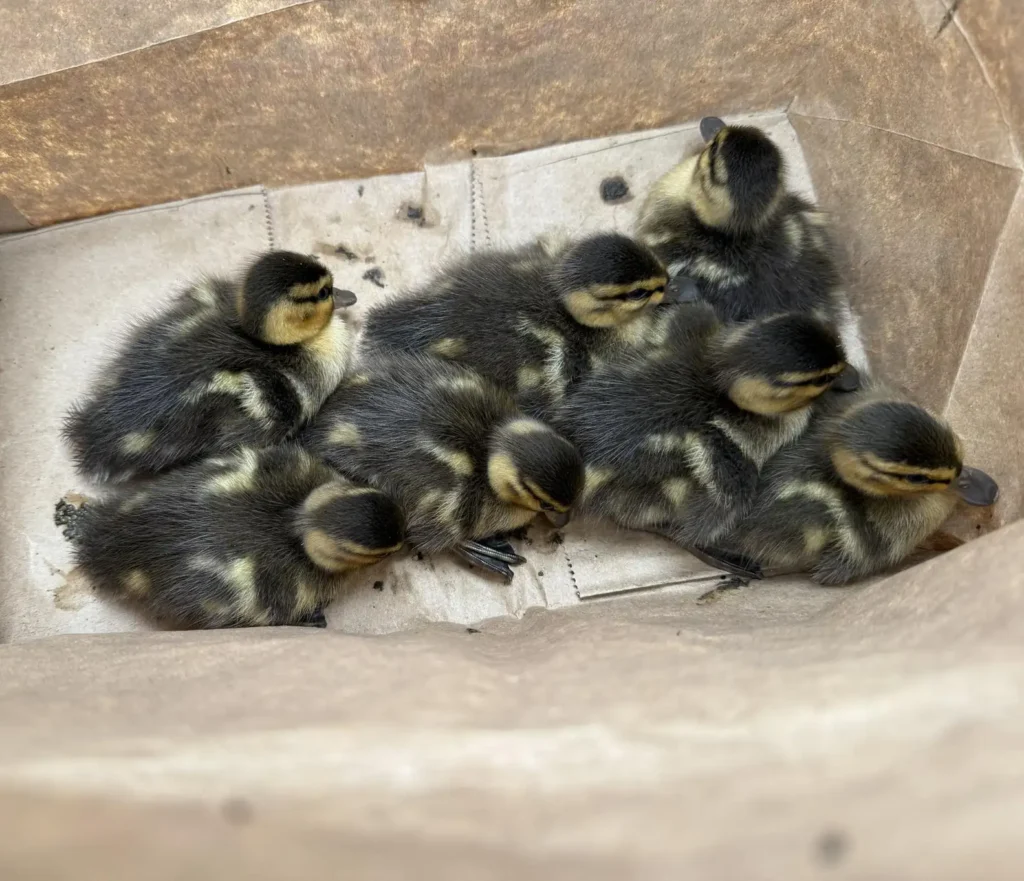
But Happy Feet wasn’t the only duckling to find his way to Newhouse this season. Just days earlier, another good Samaritan stopped traffic on the Massachusetts Turnpike after seeing yet another mother duck struck by a car. The woman scooped the panicked ducklings into a TJ Maxx shopping bag — the only thing she had on hand — and called Newhouse in tears.
So far this year, the rescue has taken in over 70 orphaned ducklings, part of Jane Newhouse’s first season as a federally licensed waterfowl rehabber. Inside the facility, ducklings are grouped by age — the youngest nestled under warm lights, the older ones splashing in tubs, and the most developed practicing for the wild in outdoor enclosures.
“Mom has to get them to water once they hatch,” Newhouse said. “And that often means crossing roads with seven to ten tiny babies — it’s incredibly dangerous.”
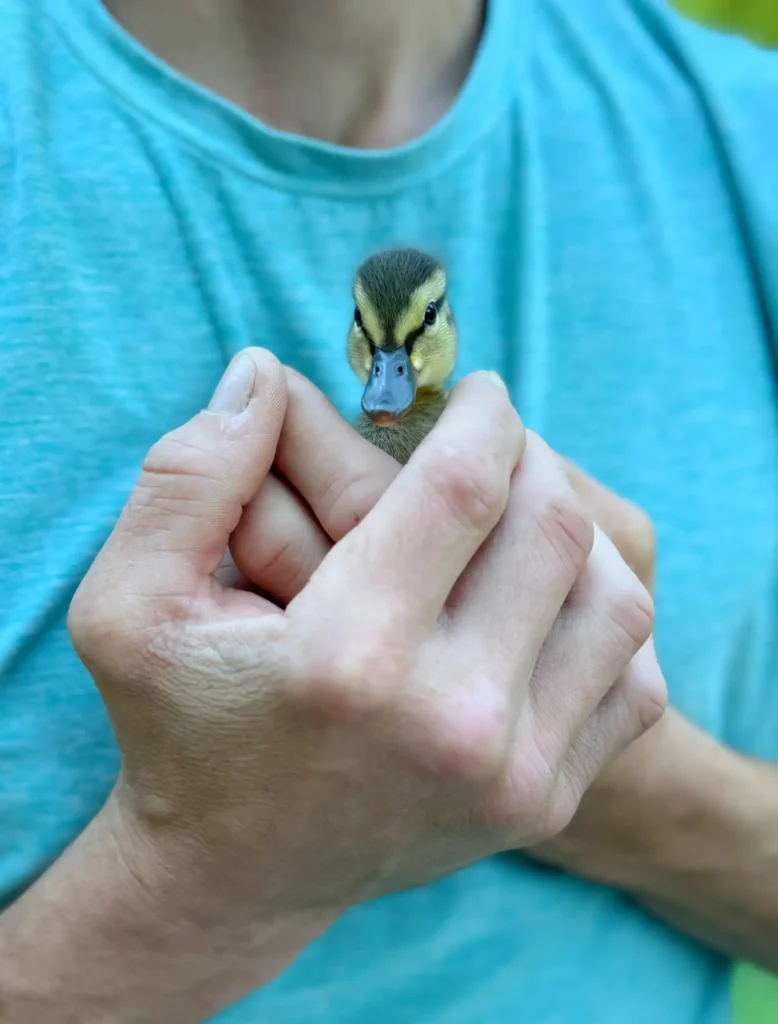
So far, Newhouse has successfully released 20 ducks back into the wild — and she hopes many more will follow.
For her, it’s not just about the ducklings. It’s about the people who bring them in.
“The man who brought in Happy Feet was just the sweetest,” she said. “It helps the people who witness the suffering to know the animal’s going to get that second chance.”
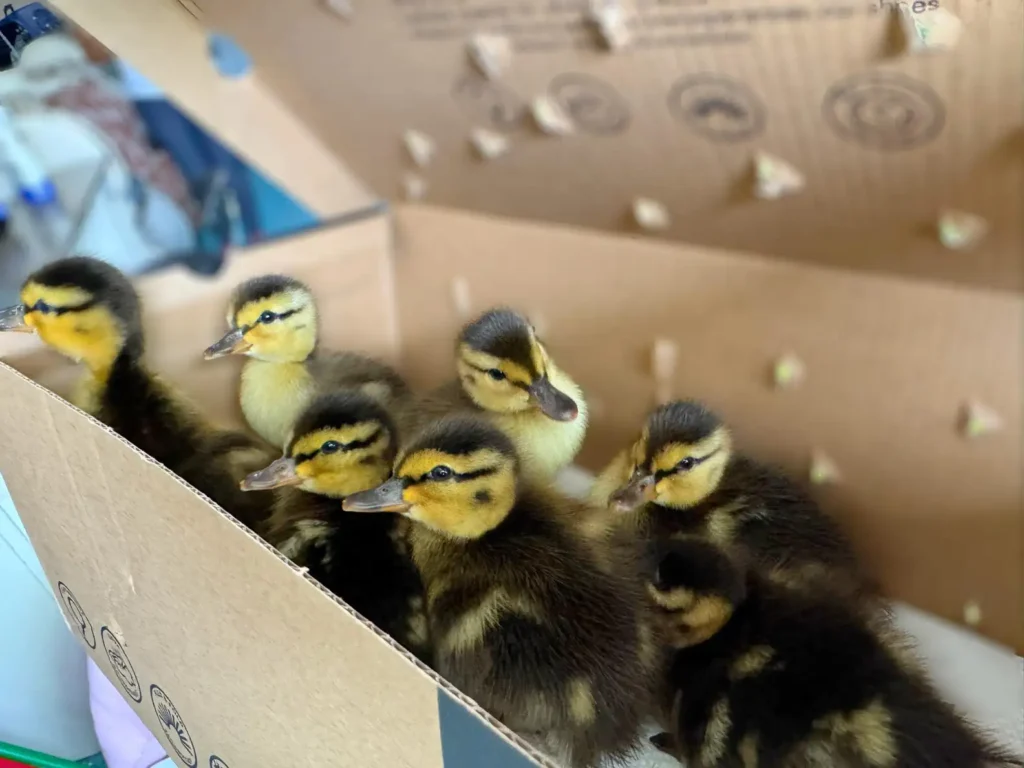
And for Happy Feet, that second chance may have only come because of tragedy.
“He wouldn’t have survived in the wild,” Newhouse said. “If his mom hadn’t been hit, he never would’ve gotten the help he needed. It’s a weird twist — but it gave him a chance.”
